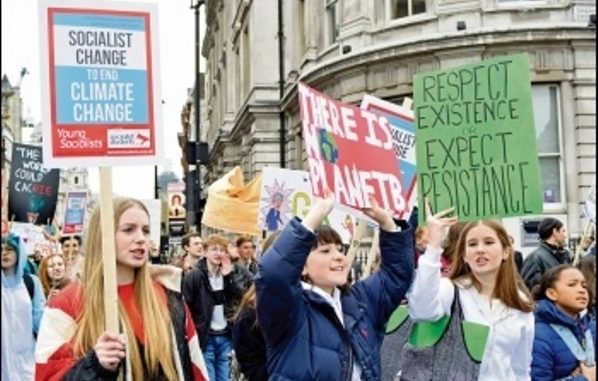
The Guardian newspaper has revealed that the logos of over eighty different left-wing, environmental and animal rights groups – including that of the Socialist Party – have been included in a guidance document circulated by Counter Terrorism Policing.
The inclusion of these logos, alongside those of fascist and white supremacist groups, understandably drew an angry reaction from campaigns such as Greenpeace, the Campaign for Nuclear Disarmament and Extinction Rebellion (XR).
Socialist Party members are also angered by any implication that our determination to build a socialist society to end war, poverty and climate change should be considered ‘extremist’. However, particularly after the revelations of undercover spying on our members and others by the Special Demonstration Squad, political policing directed against socialists and trade unionists comes, of course, as no surprise.
Should this guidance document be taken as a serious threat or not? Counter Terrorism Policing tried to play down the issue, claiming that the guidance was simply to help people distinguish between “legitimate protest groups” and “extremists.” But definitions of ‘legitimate’ and ‘extreme’ can change – especially under this Conservative government.
For example, when it was revealed that XR had been specifically listed as an ‘extremist’ organisation in their separate guidance, South-East Counter Terrorism Policing apologised for making an “error of judgement.” However, Priti Patel, the new home secretary, while accepting that XR was a “protest organisation” rather than a terrorist group, made clear that the government was “constantly looking at individuals and groups”, and that “everything has to be based in terms of risk to the public.”
‘Prevent’
These documents were produced as part of the ‘Prevent’ strategy, supposedly designed to ‘prevent people from being drawn into terrorism’. However, it is the wrong strategy to meet that objective. It dissuades teachers and young people from openly discussing issues, and risks increasing the alienation that leads some people into the dead-end of individual terrorism.
The documents could mark a worrying step towards widening Prevent’s scope to include a very different objective – to clamp down on anti-government protest.
The legislation already refers to “not just violent extremism but also non-violent extremism.” It doesn’t take too much imagination to see this being directed at climate change protestors or trade unionists organising strikes and mass demonstrations.
If left unchallenged, both school students and their teachers may start to be questioned and pressurised about their support for socialist parties and campaigns. Left-wing trade unionists might even face being barred from their posts in schools and other public services.
Trade unions should be demanding that the government withdraws these documents and the Prevent strategy, and make clear that they will act to defend members organising against the extreme and damaging effects of capitalism on millions of people and our planet.
Special financial appeal to all readers of socialistworld.net |
Support building alternative socialist media Socialistworld.net provides a unique analysis and perspective of world events. Socialistworld.net also plays a crucial role in building the struggle for socialism across all continents. Capitalism has failed! Assist us to build the fight-back and prepare for the stormy period of class struggles ahead. Please make a donation to help us reach more readers and to widen our socialist campaigning work across the world. |
Donate via Paypal |
| M | T | W | T | F | S | S |
|---|---|---|---|---|---|---|
| 1 | 2 | 3 | 4 | 5 | ||
| 6 | 7 | 8 | 9 | 10 | 11 | 12 |
| 13 | 14 | 15 | 16 | 17 | 18 | 19 |
| 20 | 21 | 22 | 23 | 24 | 25 | 26 |
| 27 | 28 | 29 | 30 | 31 | ||

